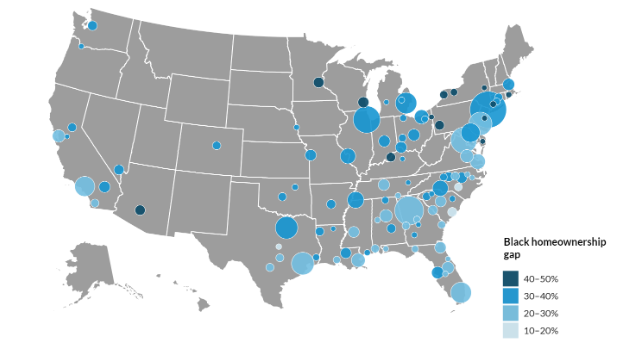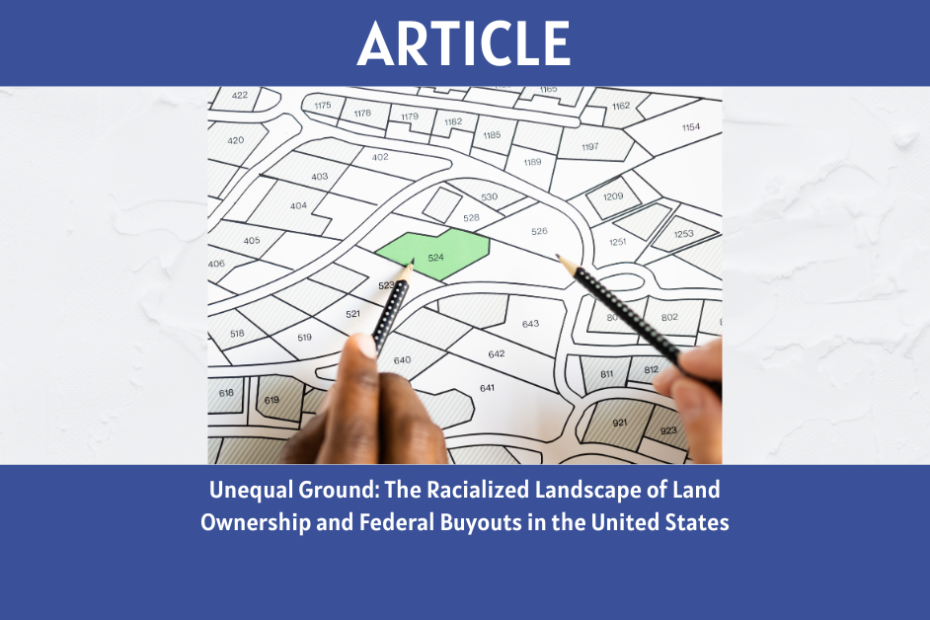In the face of climate change’s far-reaching impacts, the notion of land as an unyielding and permanent resource has been shattered and replaced by a landscape in flux. Rising sea levels, intensified flooding, and other climate-related events have cast a shadow over the stability of our land, compelling us to rethink our approaches and policies in response to these evolving challenges.
One such approach is managed retreat, a concept entailing the relocation of human settlements and infrastructure from vulnerable or high-risk areas due to environmental factors. Within managed retreat, various strategies are employed, including acquisition and buyouts, zoning and land-use regulations, land swaps, and community engagement. Acquisition and buyouts involve the purchase of properties in susceptible regions, compensating homeowners and restoring the land to its natural state. Zoning and land-use regulations aim to curtail future development in hazard-prone regions, while land swaps facilitate the exchange of at-risk properties for safer alternatives. Through community engagement, stakeholders collaborate and residents actively participate in the decision-making process, thus ensuring a smooth transition to more secure locations. Collectively, these strategies strive to fortify resilience and mitigate the perils associated with climate change and natural disasters.
However, as we delve into the intricate tapestry of land ownership and the execution of federal buyouts, a disconcerting truth emerges: there is an undeniable racialized disparity deeply ingrained within these processes. Communities of color bear the brunt of historical and systemic barriers to land ownership, which are further exacerbated by the manner in which federal buyouts are conducted. This article delves into the profound implications of this racialized landscape, examining statistics, exploring the factors perpetuating inequality, and outlining the ethical challenges that demand immediate attention and rectification.
In the journey towards a just and equitable society, understanding and addressing the racial disparities embedded within land ownership and federal buyouts is a critical step forward. This piece dissects the intricate layers of this complex issue and presents the need to brainstorm ways for enhancing inclusivity and fairness in federal buyouts programs.
Racial Disparities in Land Ownership and Buyouts
Land ownership in the United States is deeply intertwined with race, highlighted by stark disparities in access and ownership. Historically, marginalized communities, particularly people of color, have faced systemic barriers to land ownership and enjoyment. This section highlights key statistics that shed light on the racialized nature of land ownership. According to the U.S. Department of Agriculture (2017), White farmers accounted for 96.8% of all farmland owners, while Black farmers represented only 1.6%. This disparity reflects the limited representation of Black farmers in the agricultural sector. Moreover, communities of color are disproportionately located in areas affected by environmental hazards and which lack access to green spaces. The homeownership rate for White households stands at 74.5%, significantly higher than the rate for Black households, which is only 44.1% as per a 2020 study by The Brookings Institution. This homeownership gap contributes to the wealth gap and hampers the ability of Black families to accumulate generational wealth through property ownership. Figure 1 represents the gap between the White and Black homeownership rates in the 100 cities with the largest number of black households. The dots’ color represents the disparity’s magnitude, and the dots’ size is scaled to the number of Black households in the metropolitan statistical area. As we can see, not one of the 100 cities with the largest Black populations has a Black homeownership rate close to the White homeownership rate. Even in places where Black households are the majority, like Albany, Georgia, the gap persists.

Source: The Urban Institute, 2018
Regarding housing costs, approximately 20% of Hispanic households and 9% of Black households experienced housing cost burdens, spending over 50% of their income on housing expenses, compared to only 6% of White households, according to the 2020 U.S. Census Bureau’s American Community Survey. These disparities further exacerbate economic inequalities and hinder the wealth accumulation of BIPOC families. Understanding these disparities is crucial for addressing climate justice issues because different populations have unique experiences and needs related to land ownership and environmental equity. Achieving a just and equitable distribution of land and access to its benefits is essential in creating a more inclusive and sustainable society.
The racial disparities in land ownership and wealth accumulation among BIPOC communities are rooted in historical factors such as slavery, generational wealth disparities, discriminatory policies, and limited opportunities. These disparities are perpetuated by the structure, design, and operationalization of managed retreat-related buyout programs in the United States. For example, the net worth of a typical White family is nearly ten times greater than that of a Black family, with White families having a median net worth of $171,000 compared to $17,150 for Black families in 2016. Even when comparing families with similar incomes, the wealth gap persists. Inheritances and intergenerational transfers play a crucial role in perpetuating these disparities, with White families receiving larger inheritances on average.
A nationwide study by Rice University researchers highlights disparities in managed retreat-related buyout programs between White families and BIPOC families. White homeowners in majority-White areas typically avoid buyouts unless faced with extreme flood risk, while homeowners in majority-Black and majority-Hispanic areas are more likely to accept buyouts even with moderate risk. Furthermore, when White homeowners in majority-White areas do participate, they tend to relocate to nearby majority-White areas, while residents of majority-minority neighborhoods move to different areas. This perpetuates patterns of White flight and urban segregation. The study recommends monitoring, addressing disparities, providing additional stipends for lower-income households, and proactive community engagement to ensure equitable outcomes.
The racial dynamics of federal property buyouts in flood-prone areas reveal further disparities. Compensation is systematically lower for Black and Hispanic property owners compared to White property owners. Black and Hispanic households receive 9% and 5% less than the White households, respectively, in buyout values. Furthermore, five years after buyout, Hispanic and Black families experience 4% and 5% wealth depletion respectively. These patterns indicate a troubling undercompensation for Black and Hispanic property owners, exacerbating existing racial inequalities.
Appraisals are an integral part of a managed retreat buyout process, as they determine the value of properties to be acquired from homeowners in high-risk areas. Appraisals serve several purposes, including providing fair compensation by assessing market value based on factors like property condition, location, and size. However, appraisals can also introduce racial bias in the buyout process. Factors such as historical discrimination, racial disparities in property values, and biases of appraisers can result in undervaluation of properties in communities of color. These appraisal bias results in lower property valuations for Black and Hispanic property owners, leading to reduced buyout values. Additionally, the forced relocation to higher-cost areas further exacerbates wealth depletion, as the compensation received may not be sufficient to maintain previous living standards or invest in comparable housing elsewhere.
Program managers face an ethical dilemma in determining who to buyout. While offering buyouts in lower-income or majority-minority neighborhoods may have advantages, such as lower property values and higher vulnerability to climate change-related disasters, it also raises concerns. These communities have historically been targeted by discriminatory practices, and offering buyouts can potentially retraumatize residents and perpetuate injustice. Moreover, buyouts in these areas can disrupt community structures and extended family networks relied upon by BIPOC families. Financial constraints can also leave lower-income individuals worse off after the buyout, thereby exacerbating existing socioeconomic inequalities.
Program managers must prioritize equity, inclusivity, and community engagement throughout the buyout process. Engaging with affected communities, understanding their needs and perspectives, and incorporating their input into decision-making can minimize harm, promote social cohesion, and ensure the buyout process does not perpetuate injustices or exacerbate existing disparities.
Need for Distributive Justice
Distributive justice, in the context of managed retreat, is essential for ensuring an equitable and fair process for all individuals and communities involved. This principle recognizes the disproportionate burden borne by marginalized and disadvantaged communities, who are often more vulnerable to environmental hazards and the impacts of climate change. It emphasizes the importance of distributing costs, compensation, and opportunities fairly, to prevent further disadvantage and provide adequate resources and support.
In a notable case study, Louisiana’s coastal land loss is the highest in the country, if not the world. However, the state has achieved remarkable results through its resident-driven planning and design approach, particularly evident in the simple post-disaster homeowner rebuilding program. One such success story is the New Isle project, which focused on Isle de Jean Charles, an island inhabited by a predominantly Native American community for over 150 years. The project aimed to avoid replicating or exacerbating past disinvestments while ensuring community cohesion, culture, and reducing the risk for all residents.
To achieve these goals, the project implemented buyouts in a way that restored flood plains and guaranteed access back to their ancestral home for the island’s residents. Remarkably, almost 100% of the 40 families living on the island participated in the project. A unique approach was taken, allowing individuals to retain ownership of their land, which held personal and strong family value. Instead, the project focused on buying out the construction on the land, enabling residents to relocate to a new nearby area while still owning their ancestral land parcel.
An important aspect of the project’s equity perspective was that regardless of the value of the house, whether it was a million dollars or a hundred thousand dollars, the compensation was based on the average cost per square foot for that community. This approach primarily benefited lower-income households which had previously been disadvantaged, rather than those who could afford to relocate on their own. By prioritizing equity, preserving cultural connections, and reducing risk, the New Isle project offers valuable lessons in post-disaster rebuilding and community resilience.
In addition, managed retreat often involves property acquisition and buyouts. Distributive justice ensures that the compensation provided to property owners is fair, taking into account factors such as property value, historical inequalities, and the impact on individuals’ livelihoods. Distributive justice also helps address potential conflicts and tensions that may arise during the decision-making process. It promotes inclusivity, transparency, and meaningful participation of all stakeholders, ensuring that diverse perspectives and interests are considered.
Conclusion
In conclusion, the opportunities for intervention in managed retreat are vast and extend beyond flooding-related scenarios. The recognition of coastal erosion, sea-level rise, land subsidence, and wildfires as environmental risks that can benefit from managed retreat strategies opens up new avenues for resilience-building. The recognition of coastal erosion, sea-level rise, land subsidence, and wildfires as environmental risks that can benefit from managed retreat strategies opens up new avenues for resilience-building. By implementing acquisition and buyouts, zoning and land-use regulations, land swaps, and fostering community engagement, we can proactively address the challenges posed by climate change and natural disasters. Embracing these strategies not only offers the potential to revive land devastated by fires, but also ensures a fair and equitable transition to safer locations, promoting a more resilient future for communities at risk.
In addition, the opportunities for intervention in managed retreat hold immense potential for addressing not only environmental risks but also the deeply rooted racial disparities in land ownership and access. Recognizing the historical injustices and systemic barriers faced by marginalized communities, particularly people of color, is paramount for creating a more just and equitable society. Through thoughtful and inclusive approaches to managed retreat, we can collectively mitigate risks, safeguard lives and livelihoods, and cultivate a sustainable environment for generations to come.
Learn more and subscribe to our YouTube channel here: https://youtube.com/shorts/iu2zN306sA4

